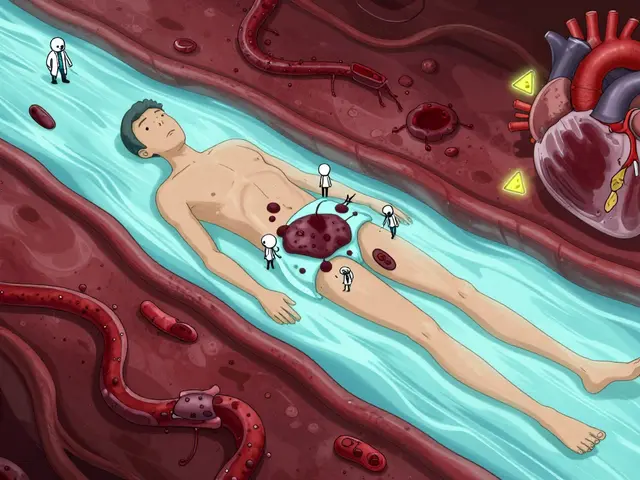Untreated Chlamydia: Long-Term Effects (May 2024)
May 2024 featured a clear, practical post about what happens when chlamydia goes untreated. The article breaks down real risks, common symptoms you might miss, and concrete steps to avoid lasting damage. If you want quick facts you can act on, this archive page summarizes the key points and tells you what to do next.
Key risks & symptoms
Untreated chlamydia often starts with few or no symptoms. That’s why many people don’t get checked. When symptoms appear, they can include unusual discharge, burning with urination, lower belly pain, or painful sex. For men, watch for testicle pain or swelling. Left untreated, chlamydia can spread and cause pelvic inflammatory disease (PID) in people with a uterus. PID can lead to scarring, chronic pelvic pain, infertility, and higher risk of ectopic pregnancy.
Men can develop epididymitis, which may cause long-term pain and, rarely, fertility problems. Both men and women can have reactive arthritis — joint pain and eye problems — after an untreated infection. Also, having chlamydia raises the chance of getting or passing HIV if exposed. The May post uses clear examples to show how a mild, ignored infection can turn into long-term health trouble.
What you can do now
Testing is fast and reliable. Most clinics use a NAAT test from urine or a swab. If you test positive, common treatments are a short course of antibiotics like doxycycline or azithromycin. Follow the treatment exactly and avoid sex until you and your partner(s) finish treatment and any follow-up tests say it’s safe. The post recommends retesting about three months after treatment because reinfection is common.
Tell recent partners so they can get tested and treated too. If you’ve had multiple partners, ask a clinic about expedited partner therapy where allowed. Use condoms and get regular screenings if you’re sexually active with new or multiple partners. The May article gives practical scripts for talking to partners and tips for remembering follow-up tests.
Know when to seek immediate care: high fever, severe lower abdominal pain, heavy vaginal bleeding, intense testicular pain, or signs of spreading infection like joint swelling and red eyes. These can signal complications that need urgent treatment.
This archive entry highlights one clear message: untreated chlamydia is often silent at first but can cause real, long-lasting harm. The full May 2024 post lays out symptoms, step-by-step testing and treatment advice, and prevention tips in plain language. If you think you might be at risk, get tested — early treatment prevents most long-term problems.
Long-term Effects of Untreated Chlamydia: Vital Facts You Need to Know
Untreated chlamydia can lead to serious health complications, affecting not only the reproductive system but other parts of the body. This article explores the long-term consequences of leaving chlamydia untreated, shedding light on symptoms, risks, preventive measures, and tips for managing the infection effectively. Awareness and early treatment are crucial to avoid permanent damage.



